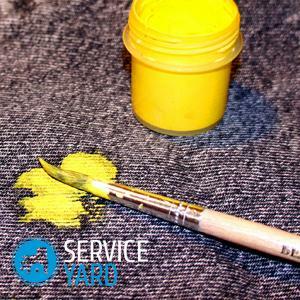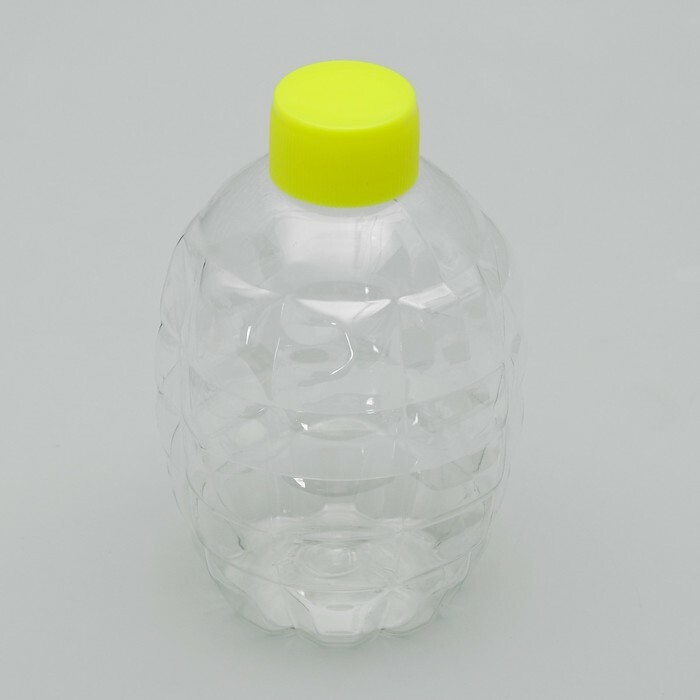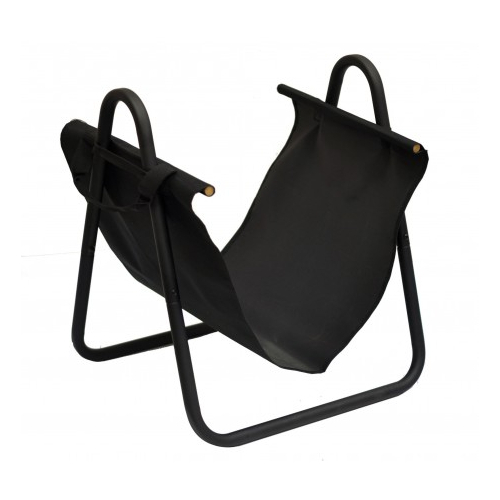
- How to remove stains from clothing?
- Tea and Coffee
- How to deal with stains of sweat on white clothes?
- Mud stains
- Stains on clothes from different pollutants:
- How to remove stains from anything?
Such a nuisance as the appearance of spots can trap any person, even the most accurate one. What can we say about our beloved children who pay little attention to such trifles. However, removing stains from tissue is not a super complicated task. Now we will try to deal with this problem in accessible ways and without much effort.
to the contents ↑How to remove stains from clothing?
To begin with, when the contamination has only appeared, try to avoid its further spreading - immediately blot it with a clean paper or cotton napkin:
- A fresh stain, most likely, you can easily wash it with a usual detergent in a washing machine or laundry soap.
- Unknown stains can be tried with a mixture of ammonia, water and salt.
- If you can not get rid of the problem with alcohol, try using a universal stain remover, good, now they are on the shelves of our stores a lot. It is convenient to use a stain remover in the form of an aerosol.
General recommendations for removal of stains on clothing:
For more convenient selection of the method for removing stains, conditionally we divide them into the following groups:
- Soluble in water - from food, tea, coffee, glue, dyes.
- Soluble in organic solvents - alcohol, gasoline, machine oil, cream, wax, gutalin.
- Insoluble in water or in organic solvents - paint, protein substances, mold, blood, urine.
Important! Some spots, such as coffee, cocoa, wine, juice, etc., need to be processed at once by several kinds of means-for water-soluble, for fatty, for insoluble.
There are general guidelines for removing any stains, regardless of their origin. Therefore, it is not superfluous to get acquainted with them before you start working. So:
- Do not rush to immediately apply the chosen cleaner for cleaning. First, clean the problem area of dirt and dust with a brush or a dry rag. Spread the cloth around the stain with starch or talcum powder to avoid additional stains.
- Never use the method without first testing it on the underside of the product, unobtrusive areas near the seams or on a spare piece of cloth. Aggressive means can ruin your thing irretrievably.
- It is necessary to get rid of the stain from the inside - use a cotton disc or a piece of cloth, you can take a hard brush or brush.
- Prefer a less concentrated solution - try to apply several times with abundant water rinsing between treatments.
- It will be convenient to put under the product a white cloth or gauze, folded in several layers.
- Remove the stain from the periphery to the center to prevent it from expanding and spreading over the surface of the fabric.
- Try to remove the contamination immediately after its appearance, otherwise it will be much more difficult to remove without damaging the product.
- Do not use acetone for processing acetate silk, chlorine for cotton, and alkali and bleach for colored fabrics.
Identification of the types of spots
Let's try to learn to recognize the origin of spots in appearance:
- The stains from the fat are always darker than the tissue on which they formed, they look like a lot of rays diverging from the center in all directions. Such spots are visible from the underside of the material.
- Spots from juice, wine, coffee, berries or juices of fat do not contain, have clear boundaries. The spots look lighter than the contour itself, eventually acquire a whitish shade.
- The most common spots that contain fatty and non-fatty substances. These are stains from milk, blood, sauces, etc., they have more or less clearly defined edges and penetrate deep enough into the tissue.
- Old stains from cosmetics, tea, wine, coffee, berries, under the influence of air, light and time oxidize, become hard to remove.
Tea and Coffee
To remove stains from tea or coffee:
- Wash the area where tea or coffee was spilled with cold water, and blot with a tissue or towel to absorb all the liquid.
- Make a soapy solution, add 2 teaspoons of ammonia to it.
- Wash the thing in this mixture. First, the dirtiest place, and then the whole thing.
- Rinse in warm water.
Well helps to remove coffee or tea - glycerine:
- Mix 1 teaspoon of shallow salt with a small amount of glycerin to make a gruel.
- Apply the mixture by gently rubbing.
- Wait for 15-20 minutes until absorbed well - the stains should become discolored.
- Then we erase in the usual way.
Important! If the stain is old, then you can try to remove it with pure glycerin, which must be slightly heated, applied and left for a while for exposure. Then wash, as usual.
In order to remove the stain from the linen stuff, you need to substitute it under a stream of warm water and wait until it breaks out of the pressure from the fabric.
to the contents ↑How to deal with stains of sweat on white clothes?
At first glance it seems that white fabrics are more whimsical in care. In some ways this is true, but when you have to remove stains from the fabric, a light shade plays into your hands. Picking up a tool, you do not have to think about the need to preserve the color of the product.
Remove sweat stains by hand
Another of the hard-to-clean stains is the stain from sweat.
Important! Specialists do not advise the use of chlorine bleach to remove them from white clothing, since such removal of stains from the fabric will contribute to the formation of yellow divorces.
One of the best solutions from sweat stains on clothes is the use of hydrogen peroxide.
Important! Peroxide has bleaching properties, and also destructively affects the protein that is present in the sweat stains.
 How to properly apply hydrogen peroxide from stains on clothes:
How to properly apply hydrogen peroxide from stains on clothes:
- Dilute hydrogen peroxide with water - one part of peroxide is one part water.
- Treat the problem area with a solution and leave for 30 minutes.
- Wash the thing in cool water.
- If the stain remains, try repeating the procedure again with a more concentrated peroxide solution.
Another way:
- Mix ammonia and common alcohol in a one-to-one ratio.
- Apply to the contaminated area, leave for 15 minutes.
- Wash in the usual way.
Important! If the stain is on synthetic fabric, it is necessary to rub it with soap and bleaching effect, leave it lathered for 15-30 minutes, then wash as usual.
If your clothes are colored, hydrogen peroxide should not be used because of its bleaching properties. Such things can be tried with a less aggressive solution of vinegar and water:
- Dilute 1 tablespoon of vinegar in 100 ml of water, soak the stain.
- Leave for half an hour and then wash in cool water with powder.
Important! This same tool can be used on colored fabrics, if it is necessary to remove unknown stains from things.
We get rid of sweat stains with machine wash
With the help of machine wash it is possible to get rid of almost any dirt, but if, unfortunately, the thing has not been washed from the first time, we recommend to treat it in one of the above ways, and then wash again.
You can try to remove sweat stains from the fabric with a liquid detergent designed for protein contamination. Soak the soiled area with the above product, leave to work for 30 minutes, then wash it in the usual way.
to the contents ↑Mud stains
The peculiarity of removing stains from fabrics that are formed from ordinary dirt consists in the fact that it should not be washed immediately. Allow the dirt to dry, then - brush dry with a brush and wash in soapy water with the addition of vinegar.
Important! If you stain the outer clothing, try removing the soiling with a cotton disc moistened in an acetic solution - mix 1 tbsp.spoon of vinegar with a glass of water.
to the contents ↑Spots on clothes from different pollutants:
- Remove wine, juice, lipstick with hydrogen peroxide solution - 1 teaspoon per half cup of water. After handling, wash in cold water.
Important! The method does not apply to colored clothing.
- For lipstick on colored clothing, wipe with turpentine or alcohol.
- A greasy stain can also be removed with turpentine, gasoline or acetone.
- Mold is wiped off with cleaned gasoline.
- From wax - gasoline or turpentine.
- From iodine is taken out with acetone or alcohol-denatured alcohol.
- Traces of blood soaked in cold water, and then wipe with a solution of ammonia( 1 teaspoon per glass of water), wash with soap in slightly warm water.
- The rust stains are rubbed with a mixture of white chalk glycerine and water - leave for effect for a day, then wash.
How to remove stains from anything?
Unfortunately, stains can appear on any surfaces. In this case, the washing machine will not come to the rescue. But we'll show you how to cope with these troubles and clean up any surfaces. Let's get started.
Spots on the upholstered furniture
Shed coffee. Begin to get rid of "hot on the trail":
- Wipe the stain with a wet sponge. Dry the area with a towel or paper towels.
Important! You can apply the recipe with glycerin, which was given above.
We remove fatty as well as spots of unknown origin as follows:
- We are brewing equal parts of wine alcohol, ammonia, petrol( can be replaced with turpentine or other solvent).
- Clean the problem place before it disappears.
- You can also try to remove stains with a soap solution with the addition of alcohol.
Spots on wooden furniture
Remove the dripping green with a napkin and wipe it with an eraser( a student pencil eraser).
Important! In the same way, ink is removed.
Water or any other liquid:
- Mix the vegetable oil and salt until the gruel.
- Apply to stain, leave for 2 hours.
- Remove the mixture with a damp cloth, then wipe dry.
- Wipe this place with wax, polish well.
Spots on the floor
On the floor, all kinds of dirt appear at least as often as on cloth, and as a rule - much more often. Therefore, you need to know how to quickly solve the problem.
Greasy stain on the parquet:
- Mix the detergent powder with a little water.
- Grate the gruel in a problem place, leave overnight to effect.
- Rinse with warm water.
Second method:
- Sprinkle the problem surface with magnesia powder.
- Leave for 2 hours.
- Sweep the powder.
Inks on linoleum:
- Treat the soiled area with fine sandpaper.
- Remaining trace wipe with vegetable oil or linseed oil.
- Polish with a soft cloth( terrycloth).
Important! The ballpoint pen is removed with meth.
We remove unknown stains with gasoline or ammonia
Spots on the carpet:
- From coffee - remove with glycerin( 1 tablespoon), mixed with cold water( 1 liter).
- From wine or beer - vinegar( 1 teaspoon), mixed with warm water( 1 liter).
- From ink - a solution of acetic or citric acid( 1 teaspoon), mixed with hot water( 1 glass).
- Greasy marks - a mixture of gasoline and synthetic detergent powder. After treatment, rinse with hot water.
Important! More oily traces can be cleaned with a means for washing windows. After moistening the sponge, wipe off the dirt. After removing the stain, wipe the area with a sponge soaked in clean water.
Now you know almost everything you need to remove stains from the fabric, as well as from interior items in your home. Use this information as necessary, then the purity of clothes and the whole house is guaranteed to you, even if they occasionally appear spots of unknown origin.



